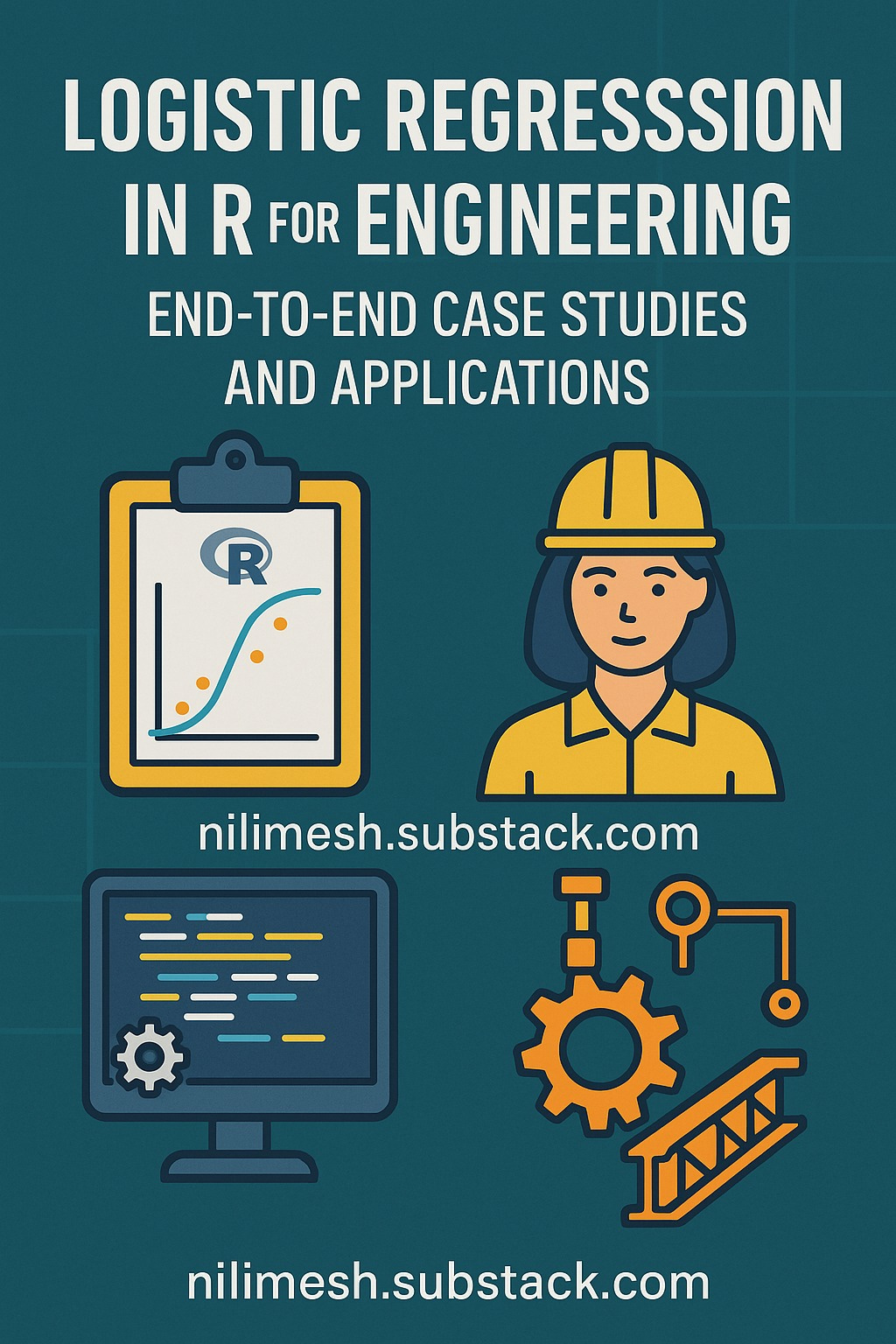Article 257: Logistic Regression in R for Engineering: End-to-End Case Studies and Applications
This article explores how logistic regression can be applied in engineering to predict failures, defects, and risks, demonstrating end-to-end workflows in R with practical diagnostics and interpretability to support reliable decision-making.
Article outline
1. Introduction to Logistic Regression in Engineering
Brief overview of logistic regression and its importance in engineering classification problems.
Why logistic regression is useful: interpretability, probability outputs, odds ratios.
Contextual examples of engineering scenarios where logistic regression applies.
2. Applications of Logistic Regression in Engineering
Structural Engineering: Predicting the likelihood of component failure under load, temperature, or material conditions.
Manufacturing Engineering: Identifying whether a manufactured part is defective using operational and process variables.
Energy Systems Engineering: Classifying operating conditions as safe or risky based on environmental and system load data.
3. Mathematical Foundation of Logistic Regression
Logistic (sigmoid) function and mapping linear predictors into probabilities.
Coefficients as log-odds and interpretation via odds ratios.
Brief mention of estimation via Maximum Likelihood Estimation (MLE) and possible regularization.
4. Setting Up the R Environment
Installing and loading necessary R packages (
stats,caret,pROC,ggplot2,ResourceSelection, etc.).Preparing the environment for data simulation, preprocessing, modeling, and visualization.
5. Creating Engineering Datasets in R
Simulating datasets for three case studies:
Structural failure prediction (load, temperature, material quality).
Manufacturing defect detection (vibration, pressure, operator skill).
Energy system risk classification (humidity, load, temperature).
6. Preprocessing Engineering Data
Splitting data into training and test sets.
Scaling predictors where needed.
Ensuring proper factor encoding for categorical outcomes.
7. Building Logistic Regression Models in R
Using
glm()withfamily = binomialfor logistic regression.Training models on engineering datasets.
Extracting coefficients and interpreting odds ratios.
8. Model Evaluation and Diagnostics
Confusion matrices and classification reports (
caret::confusionMatrix).ROC and AUC using
pROC.Precision–Recall curve.
Calibration plots and Hosmer–Lemeshow test (
ResourceSelection).Visualization of odds ratios and feature importance.
9. Case Study 1: Structural Failure Prediction
Full workflow: preprocessing, training logistic regression, evaluating, and interpreting coefficients.
10. Case Study 2: Manufacturing Defect Classification
Full workflow applied to manufacturing data with focus on process improvement insights.
11. Case Study 3: Energy Risk Classification
Full workflow for energy systems with emphasis on risk management and operational safety.
12. Comparison with Alternative Models in R
Benchmarking logistic regression against Decision Trees (
rpart) and Support Vector Machines (e1071).Discussion of accuracy, interpretability, and use cases.
13. Advantages and Limitations in Engineering Applications
Advantages: interpretability, simplicity, probabilistic outputs.
Limitations: assumption of linear log-odds, sensitivity to multicollinearity, limitations in non-linear relationships.
14. End-to-End R Script
A unified script that includes dataset creation, preprocessing, logistic regression modeling, diagnostics, visualization, and model comparison.
15. Conclusion
Key takeaways about applying logistic regression in engineering contexts.
Emphasis on both predictive performance and interpretability for informed decision-making.
Keep reading with a 7-day free trial
Subscribe to AI, Analytics & Data Science: Towards Analytics Specialist to keep reading this post and get 7 days of free access to the full post archives.


